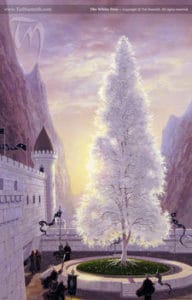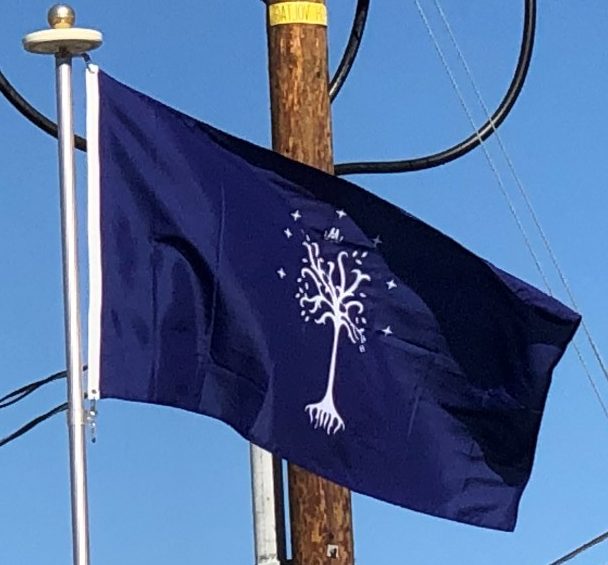Messengers were sent to get help from the Éothéod, a tribe, which lived in the northern vales of the Anduin, but nobody expected the messengers to reach their destination. When certain peril came upon Gondor, however, the Éothéod turned the tide of the Battle of the Field of Celebrant. After the victory the Éothéod were awarded the fields of Calenardhon north of the White Mountains from the Gap of Rohan at the southern end of the Hithaeglir, Fangorn forest, rivers Limlight to Anduin, western Emyn Muil, and the Mering Stream, where they established the kingdom of Rohan with Eorl the Young as their first king. A permanent alliance between Gondor and Rohan was established by the oath Eorl swore to Cirion.
The War of the Ring and the Restoration:
Several centuries later, Sauron had prepared for the final conquest, and in TA 3018 his forces overran Ithilien. The attack was stopped at Osgiliath with the destruction of the bridge across the Anduin. The following year Minas Tirith faced a larger attack from Mordor, with additional threat from the Corsairs of Umbar. Aragorn summoned the Dead Men of Dunharrow to destroy the forces from Umbar, freeing forces in the south of Gondor to come to the aid of Minas Tirith. Gondor then defeated the army of Mordor with the aid of the Rohirrim in the Battle of the Pelennor Fields, though with heavy losses. The combined army of the West then carried the battle to Sauron at the Battle of the Morannon, a feint to distract Sauron’s attention from Frodo Baggins’s quest to destroy the One Ring in Mount Doom, thus causing Sauron’s destruction and the allies’ ultimate victory.

After the second and final defeat of Sauron, the Kingship was restored, with Aragorn crowned as King Elessar of the Reunited Kingdom of Arnor and Gondor. Faramir, last heir of the Ruling Stewards, retained his office as the Steward to the King, and ruled over Gondor’s eastern region of Ithilien; a fair land between the river Anduin and the Ephel Dúath. The oaths between Gondor and Rohan were renewed, and several joint campaigns were fought in the east and south against the remnant of the Easterlings and Haradrim; all former territories of the South-kingdom were won back during the following centuries, and its power and wealth were restored. Several Tolkien’s writings state that “…of Eldarion son of Elessar it was foretold that he should rule a great realm, and that it should endure for a hundred generations of men after him, that is until a new age brought in again new things; and from him should come the kings of many realms in long days after”.
Armies:
Second Age:
The soldiers of Gondor were renowned during the Second Age for their skill and valour. Training men of Gondor during the Second Age instilled within their soldiers a martial spirit and ardor, goading them to fight to the death against the hordes of Mordor, Rhûn, and Harad. Every man was physically imposing: being very tall at over six feet, very broad, and very strong as well. Every single soldier was in peak fighting condition and ready to fight against Sauron’s hordes (especially during the War of the Last Alliance). The three major weapons they used were spears, longswords, and longbows. They also knew how to form cohesive box-formations, which were sturdy enough for both offensive and defensive purposes. The soldiers wore heavy plate armour and utilised large shields made out of multi-layered wood and edged in metal for reinforcement.
